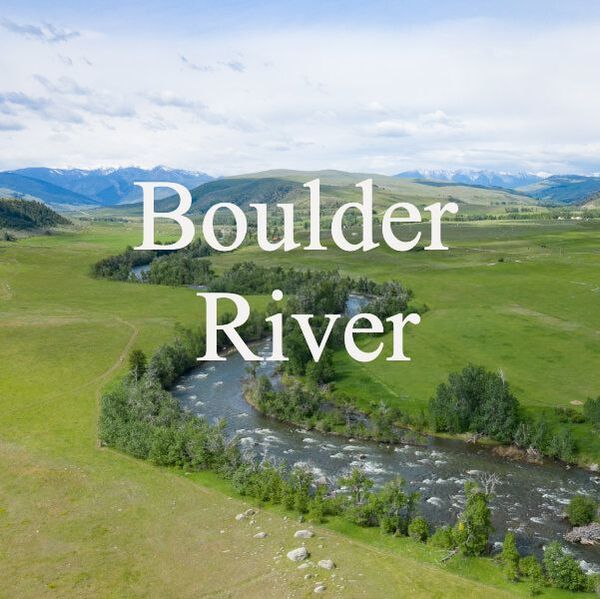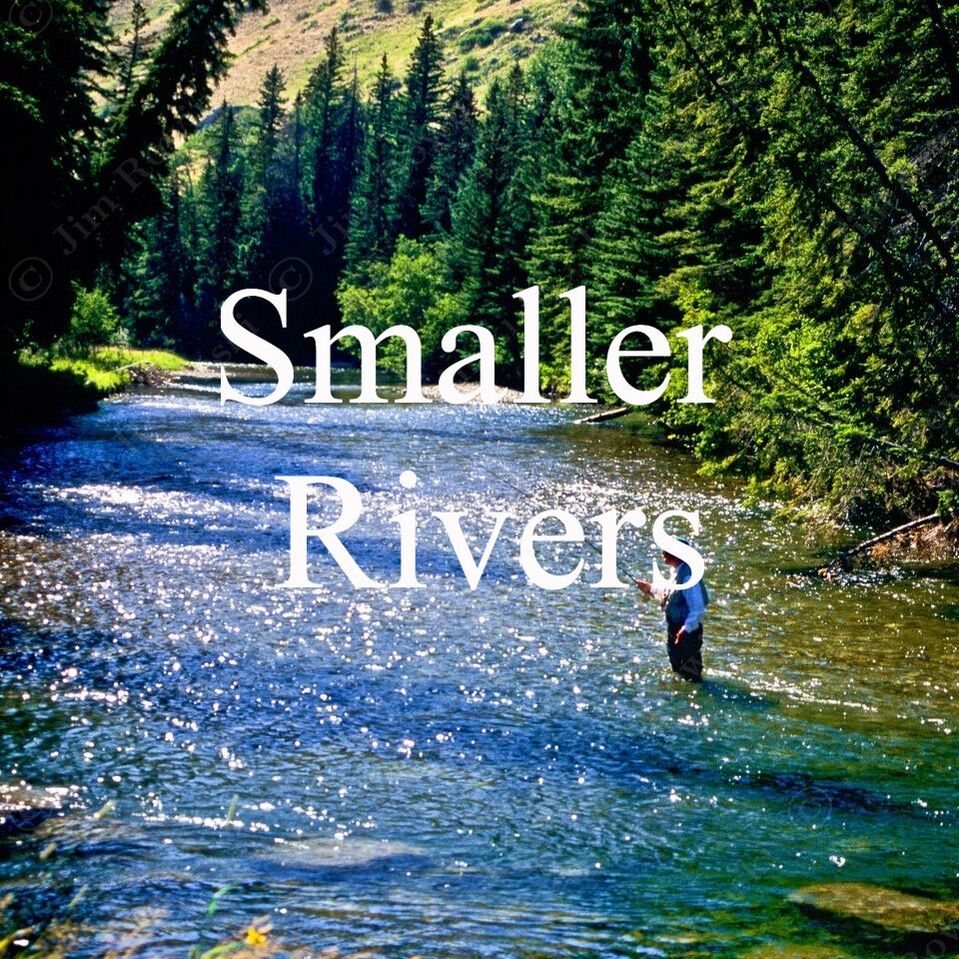|
|
The Horn is a tailwater fishery that has drawn anglers from around the world since it was first opened to public recreational fishing in 1981, and the trout have kept them coming back again and again. With more fish packed into each mile of its waters than any other river in Montana, the Bighorn River boasts great numbers of brown trout and rainbow trout and consistent early season fishing beginning in March and going all the way through November. Flowing through the western edge of the high plains in the arid eastern half of Montana, few trees are found except along the riverbank. Generally a warmer and drier climate-wise than our more western rivers, great fishing starts earlier than other waters. Trout fishing on The Horn is generally localized to the first 13 miles below the dam, to the Bighorn Access Site. Generally, except during the fall and spring, the lower half of the Bighorn River is a warm water fishery for catfish, whitefish and bass. Not surprisingly, the upper thirteen miles of the Bighorn River receives heavy fly fishing pressure. The period between July and September sees the heaviest use. On a busy summer day, it is not uncommon to see dozens of rafts floating the river with many more anglers fishing from shore. March is the favorite month - the trout are fully awake, hungry after a long winter nap, and most other anglers are still hibernating themselves so it's quiet. Yellowtail Dam that feeds the blue-ribbon section of The Horn helps keep run-off to manageable flows. While nymphing tends to be the most productive technique on The Horn, fantastic dryfly and streamer fishing can be had, especially the summertime 'hopper fest that starts in August. Baetis and midge hatches will get the season started in March. The summer months bring on the little black caddis and trico hatches along with terrestrials of many varieties. When it comes down to it though, the trout in the Bighorn River eat a LOT of sowbugs and scuds, so nymphing these patterns is the most productive way to catch fish on this tailwater. You can also drum up some great fish by stripping streamers, especially in the fall months. **Content Credit: Rocky Fork Outfitters The Bighorn River is unquestionably one of America‟s best-known trout streams. The blue ribbon section of this river begins as a tailwater outlet of Yellowtail dam, which was constructed in the early 1960‟s. Due to the fact that the river begins in this manor, its waters are rarely off color and never freeze immediately below the dam due to the constant release of relatively warm water. This provides fishing opportunities even during the coldest Montana winter days. Prior to the recent drought years, the “Horn” supported trout populations ranging from 8,500 to 10,000 trout per mile. Floating this river can seem like a journey through a fish aquarium. As you look over the side of the boat, it is not unusual to see hundreds of fish in the crystal clear waters swimming below. However, things have changed significantly on the Bighorn. The most recent fish population statistics released by the Montana Department of Fish, Wildlife, and Parks indicates that populations have been severely been reduced to approximately 1,500 fish per mile. This is both good and bad news. The obvious bad news is that there are less fish to catch, however, the size of the remaining fish have increased with a large proportion of the fish in the 20 inch or above range. Fishing on the “Horn” is a very technical experience as well as a very “social” experience. The vast majority of food sources in the Bighorn are in the itsy-bitsy size class. Flies are typically size 18 to 22, especially the dry flies. This calls for 5x to 6x tippets and long fine leaders. Strikes are usually subtle and constitute more of a “feeling” that you have had a strike. Unfortunately, the public notoriety of the river attracts crowds of fishermen from local and national destinations. It is not unusual to see 40 to 50 or more floaters on the river in a single day. At times, tempers and ethics become frayed, and I have experienced more than one tantrum from either a guide or the locals defending what they believe to be their hole. The more popular locations often have a waiting line of fishermen. It is not my idea of a quality fishing experience even though the river has some truly impressive lunkers. The river is dominated by brown trout with a lesser amount of rainbows. The best times of the year to fish the Bighorn, for my money, is late fall, winter and early spring. During the June runoff, when all the other local rivers are blown out, I‟ll force myself to go to the “Horn” since it is not affected by spring runoff due to the constant release of water from Yellowtail Reservoir. However, be forewarned, this is the time of the year when the crowds really descend on the Bighorn, so be on your best behavior. Some folks may be itching for a fish (fist) fight. Wading on the Bighorn is a pretty easy proposition. However, the current can be deceptively strong and the depths of runs and holes can be enough to hide the Titanic. The bottom is typically composed of silt and sand, and there are few slick boulder or cobble sections within the 26 miles below the Afterbay dam. There is limited access on the Bighorn, so wading typically occurs near the Afterbay access, Three-mile access and Bighorn access. Be prepared to meet many new and exciting people, and you‟ll have a good time. Flies used on the Bighorn fall in to the category which I refer to as “fly du jour”, meaning that the fish soon grow accustomed to seeing a particular pattern and get smart or adapt to not eating that particular pattern knowing that it is a fraud. Thus, you have to keep up with the Joneses and switch to the new “hot” pattern before the fish grow tired of it. As previously discussed, flies are usually small since the bug life in the river is small. Nymphs are the day in and day out staple of the river with sow bugs, shrimp, Ray Charles, and pheasant tails being the standards. But rest assured, that when you fish the “Horn”, there will be a new hot pattern that you will have to purchase from one of the many fly shops. The most famous fishing, and the reasons for the human hordes, is undoubtedly the dry fly action beginning with the Baetis in early April, followed by pale morning duns, little black caddis, and tricos, and finally baetis again as late fall rolls around. I usually try to buck the trend and throw big and ugly streamers, especially in the fall when the brown develop their spawning attitudes. |


Fly Fishing Program Leadership
MT Outfitter Licenses
#6468, #45286, #23632, #36549
MT Outfitter Licenses
#6468, #45286, #23632, #36549
"No Place 'Speaks' Montana like...
The Lodge!"
Contact Info:
Montana Fly Fishing Lodge
6 Running River Way
Absarokee, MT 59001
(406)780-0015
[email protected]
montanaflyfishinglodge.com
Montana Fly Fishing Lodge
6 Running River Way
Absarokee, MT 59001
(406)780-0015
[email protected]
montanaflyfishinglodge.com
©
2024 All Rights Reserved. Montana Fly Fishing Lodge®
Terms of Use
Privacy Policy









